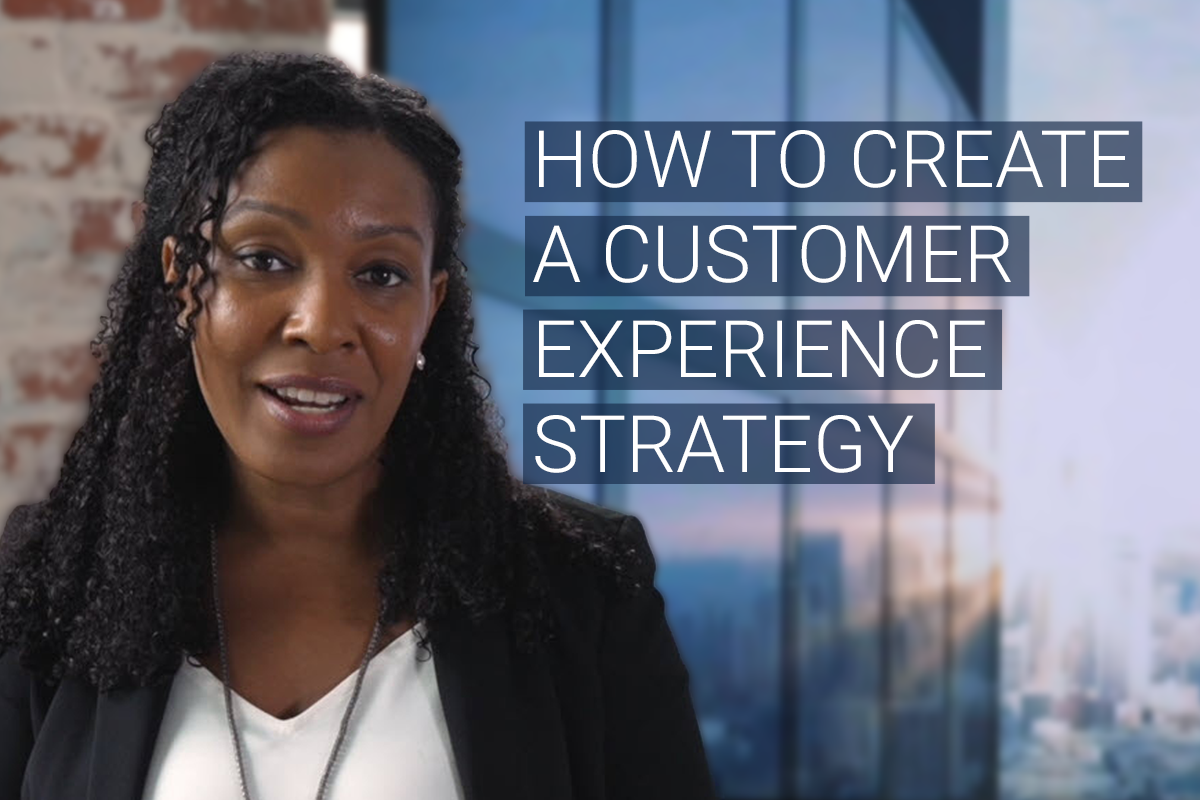Whether you are a large or small organization, business, nonprofit or church, your customer’s experience matters (or your visitor’s experience, or donor’s experience). It tells you where you are and where you have the potential to go. This all starts with capturing, measuring, and analyzing your customer experience data which allows you to develop a customer experience strategy for your organization that will have a lasting impact.
Here are four ways you can capture your customer experience data and analyze those results to create a customer experience strategy that works for you.
1. Identify Your People
Who are your ideal customers? Who are your visitors? Who gets the most value from your products, services, or church? Then consider who will come back again. These are your people. Often, organizations market to wide audiences that are not interested, are unable to come or use the products, or are unwilling to buy into the marketing. Once you know your people, you can strategically target and market to those people and satisfy their needs.
You can discover who your ideal users are by simply asking:
Who they are (name, a little bit about them)
A demographic question (location, occupation, etc.)
How they are using your product or why they visited your website/location
2. Map the Customer Journey
What are the key touchpoints of your customer’s experience? When they purchase online, return a product, submit a support ticket, check-in, parking, etc.. Know what it looks like for a customer from start to finish. Often, it’s not your product that creates the bad experience, it’s a missed opportunity, bad call, or clunky return process along their journey that does that.
3. Gather Customer Feedback
Have you ever wondered why you get that one question survey after a purchase? You know the one: “On a scale of 0 to 10, how likely are you to recommend this product to a friend?” This is called NPS, Net Promotor Score. This is an invaluable simple metric that 1) tells you how you are doing against industry averages and 2) measures your customer’s loyalty. If your goal is to grow, ensuring your people are well served and will talk about you enthusiastically to others can be a game changer. Conducting customer feedback surveys doesn’t have to be an extensive process - just this simple question with an open text box for additional comments can capture a lot of information about the experience your customers are having.
4. Capture Employee Feedback
Finally, don’t forget about your internal customers… your employees and staff. Capturing employee feedback is critical. You can do this by asking them the same simple question, “How likely are you to recommend this product/organization/service to a friend?” This gives your employees, volunteers, or teammates an opportunity to have a voice in improving your customer’s experience while also giving you first-hand insight from the people who know your products and services best. Remember, your brand is defined by your customer’s experience, and that experience is delivered by your employees and staff.
What are you currently doing to improve your customer experience? And if you have other thoughts or questions on customer experience that we can help you with, share in the comments below or contact us!
Take your customer experience strategy a step further with this video on 3 Tips to Enhance Your Customer Experience.
Toni Scialanca is a Consultant at The Center Consulting Group. She holds an M.S. in Organizational Leadership from Cairn University and is currently pursuing a Doctorate degree in Strategic Leadership from Regent University. In addition to her work with The Center, Toni also serves as Board VP Chair for a global nonprofit encouraging leadership development in young girls. Toni’s previous work experience included various areas of supply chain, customer experience, and product deployment as well as in church leadership and management. Her consulting expertise includes strategic planning, leadership coaching, team building, and customer experience.




![Leadership: How to Be a World Class Boss [VIDEO]](https://images.squarespace-cdn.com/content/v1/571fc0ea1d07c0fd6d72c167/1744640489138-X5LUNZT3JTRQYSSZXV1C/boss+thumbnail.png)
![Conflict: The Importance of Having Tough Conversations [VIDEO]](https://images.squarespace-cdn.com/content/v1/571fc0ea1d07c0fd6d72c167/1741365599296-KTWEJ5PTNH1BX2GJ9REJ/Conversations+blog.png)
![Exit Planning: The Challenge of Business Exit Planning & Why It Matters to You [VIDEO]](https://images.squarespace-cdn.com/content/v1/571fc0ea1d07c0fd6d72c167/1738339040891-VIW87N2NCZUCKLYNOHB6/exit+blog.png)

![Teams: Is Your Team Dysfunctional? [VIDEO]](https://images.squarespace-cdn.com/content/v1/571fc0ea1d07c0fd6d72c167/1733243870005-NOI69Z74DLNVLIB8MRRJ/dysfunctional+blog.png)
![How to Recruit and Inspire Volunteers [VIDEO]](https://images.squarespace-cdn.com/content/v1/571fc0ea1d07c0fd6d72c167/1728421227208-6JAUFVXEJW5KK6YE58JR/volunteers+blog.png)
![Trust: 4 Steps to Rebuild Damaged Trust [VIDEO]](https://images.squarespace-cdn.com/content/v1/571fc0ea1d07c0fd6d72c167/1725969594417-7AN9PJO2X8TTR77ACDFP/trust+blog.png)
![Blind Spots: How to Identify & Avoid Blind Spots in Your Organization [VIDEO]](https://images.squarespace-cdn.com/content/v1/571fc0ea1d07c0fd6d72c167/1722610352594-FAXECLPC61QYJH2I5YT8/blind+spot+blog.png)
![Family Business: Will the Family Business Destroy Our Family? [VIDEO]](https://images.squarespace-cdn.com/content/v1/571fc0ea1d07c0fd6d72c167/1718027719043-MU9AYPTQ7GM4XWT9EGD1/destroy+blog.png)
![Teams: How to Breathe New Life into a Broken Team [VIDEO]](https://images.squarespace-cdn.com/content/v1/571fc0ea1d07c0fd6d72c167/1714749389916-G2CWVK8OM1JJSD9058CL/breathe+blog.png)
![Planning: The Power of Planning [VIDEO]](https://images.squarespace-cdn.com/content/v1/571fc0ea1d07c0fd6d72c167/1712597764732-WHRZPRLZ6V78CBGKBPZA/PLanning+blog.png)
![Leveling Up Your Leadership: Becoming an Effective Senior Leader [VIDEO]](https://images.squarespace-cdn.com/content/v1/571fc0ea1d07c0fd6d72c167/1710266273593-QN3HEBJ5FII4GKQFH91Q/leveling+up+blog.png)
![Recruiting & Retaining “Mature” Team Members [VIDEO]](https://images.squarespace-cdn.com/content/v1/571fc0ea1d07c0fd6d72c167/1707849950823-Y5WJLYXM6ZPU55TKG27Y/recruitment+blog.png)

![Gaslighting: How to Identify It & Take Back Control [VIDEO]](https://images.squarespace-cdn.com/content/v1/571fc0ea1d07c0fd6d72c167/1699381799669-Y6XNYG2X3ZD1US80XAFY/Gaslighting+blog.png)
![Decision-Making: Why Smart Leaders Do Dumb Things [VIDEO]](https://images.squarespace-cdn.com/content/v1/571fc0ea1d07c0fd6d72c167/1696947285846-ZIA5M26B5AF9SRFGWFPV/Dumb+Things+blog.png)

![Meeting Effectiveness: 4 Different Types of Meetings & Why It Matters [VIDEO]](https://images.squarespace-cdn.com/content/v1/571fc0ea1d07c0fd6d72c167/1690296011536-23CWWE2VJ40QJ0UA1EZY/meetings+blog.png)
![Leadership: 4 Directions You Need to Lead [VIDEO]](https://images.squarespace-cdn.com/content/v1/571fc0ea1d07c0fd6d72c167/1689105063370-WQTIN47T3TP8YXQM3RMP/directions+blog.png)
![Leadership Model: Are You a Cheerleader, Drill Sergeant, or Coach? [VIDEO]](https://images.squarespace-cdn.com/content/v1/571fc0ea1d07c0fd6d72c167/1686670057921-DJ286QE8OZOQKE22SZAL/coach+blog.png)
![Developing Women Leaders: The Power of Leader Efficacy [VIDEO]](https://images.squarespace-cdn.com/content/v1/571fc0ea1d07c0fd6d72c167/1683572272369-EJ4N7BBXL0832YUM4XUN/Women+efficacy+blog.png)


![Innovation: How To Make Innovation Part of Your Leadership [VIDEO]](https://images.squarespace-cdn.com/content/v1/571fc0ea1d07c0fd6d72c167/1675365017628-0ZAPR2WCAM23JVDHM34I/Innovation+blog.png)
![Civil Discourse Part 2: 3 Cognitive Skills to Help You Understand Different Perspectives [VIDEO]](https://images.squarespace-cdn.com/content/v1/571fc0ea1d07c0fd6d72c167/1673898642478-RKKE5JM6YMMKG460MCOD/Civil+Discourse+Cognitive+Skills+blog.png)
![Civil Discourse Part 1: 3 Emotional Skills to Engage With Those You May Not Agree With [VIDEO]](https://images.squarespace-cdn.com/content/v1/571fc0ea1d07c0fd6d72c167/1667851162605-2PANA7ZP4DAWH0WI7V3B/Civil+Discourse+Emotional+Skills+blog.png)
![Coaching: Leadership Coaching for High Performance [VIDEO]](https://images.squarespace-cdn.com/content/v1/571fc0ea1d07c0fd6d72c167/1665424350332-LKS9SEVB9T8ZPOOMVSAT/Coaching+blog.png)
![Family Legacies in the Workplace [VIDEO]](https://images.squarespace-cdn.com/content/v1/571fc0ea1d07c0fd6d72c167/1663246593252-EGUEIAVMWS491D6F9GK8/Family+Legacies+blog.png)

